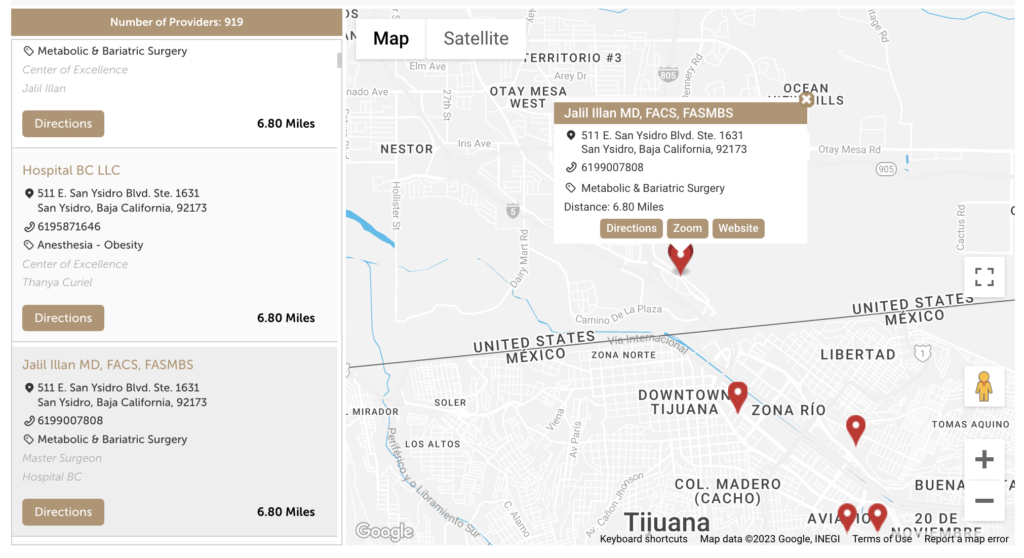If you’ve had a vertical sleeve gastrectomy, or if you’re considering having one, it’s important to know about the possibility of revision surgery. A revision can be done for a variety of reasons, including weight regain, problems with the staple line, and inadequate weight loss. In this blog post, we will discuss what you need to know about vertical sleeve revision surgery that includes a conversion to gastric bypass.
What Is Gastric Sleeve?
Gastric sleeve surgery is a weight loss procedure in which the stomach is shrunk to about 15% of its original size. The reduced stomach size holds less food and enables most patients to feel full with smaller portions, thereby eating less and losing weight.
During gastric sleeve surgery (a vertical sleeve gastrectomy), approximately 85% of the stomach is stapled shut and removed from the body, leaving behind a small tube-shaped pouch that looks like a banana or sausage. This reduces the capacity of your stomach so you eat less at each meal, but it doesn’t change how your digestive system works because nothing else is altered during this procedure.
Why Does Gastric Sleeve Surgery Sometimes Fail?
Like any weight loss surgery, vertical sleeve gastrectomy is not a quick fix or an easy way out. It should be used in combination with a comprehensive strategy for long-term success that includes nutrition and exercise counseling as well as behavior modification for making lifestyle changes. Even when patients do everything right, sometimes their bodies just don’t cooperate with the results they would like to see from their procedure.
Some of the reasons why patients might consider revisional surgery include:
Weight regain – Patients can experience weight regain if they aren’t able to stick to dietary guidelines after surgery but it’s also possible that your body won’t respond appropriately even if you do follow all of your surgeon’s recommendations. In fact, up to 40% of patients who have sleeve gastrectomy experience weight regain within the first five years after surgery.
Inadequate weight loss – Some patients won’t lose enough weight to meet their goal, regardless of how well they manage lifestyle changes and dietary guidelines. If you don’t achieve at least 50 percent excess body mass index (EMMI) loss, or if your health is not improved by having vertical sleeve surgery, then it might be time to consider a revision procedure.
Problems with staple line leakage – Leakage can occur when the staples used during gastric sleeve are placed too close together or are too wide apart. It’s also possible that there wasn’t enough tissue left behind in between where stapled, which can lead to a hole in the stomach that allows food and digestive juices to escape.
Other problems – There are other reasons why patients might consider revision surgery, such as an inability to tolerate food because of a narrowing of the opening from the pouch into the small intestine (stricture), vomiting, dehydration, or malnutrition.
How Is Gastric Sleeve Converted to Gastric Bypass?
A revision from gastric sleeve to gastric bypass is one way to address a failed sleeve gastrectomy. The good news for patients who are facing this type of surgery is that it’s not considered as complex or risky as primary weight loss procedures like sleeve and bypass because there isn’t any additional stapling involved.
The first step in converting from vertical sleeve to gastric bypass involves exposing the stomach pouch by cutting around it using electrocautery (electrical current) or scissors. Then, a small section of your intestine will be separated from the rest and connected directly to your stomach pouch with sutures or staples so food can pass into your intestines more quickly than with standard vertical sleeve surgery. This connection is called a “bypass.”
The last step is to create a small stomach pouch out of the larger section of your intestine that remains. This is done by folding it over on itself (like an accordion) and stitching it in place. This new pouch will hold about the same amount as the pouch created from vertical sleeve gastrectomy, but because food will now bypass most of your small intestine, you’ll feel full after eating much less.
If you’re considering revisional surgery, be sure to talk with your surgeon about which procedure might be best for you. There are pros and cons to both converting to gastric bypass or undergoing a more complex surgery like a duodenal switch.
Don’t have a surgeon yet? Talk to Dr. Jalil about Tijuana bariatric surgery. He will answer all of your questions, including, “Can you have lap band surgery after gastric bypass?”






